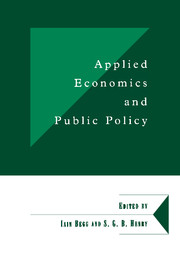1 - Introduction
Published online by Cambridge University Press: 06 July 2010
Summary
Applied economics is a dark art. A skilled applied economist has to use the tools of economic theory to articulate the question to be answered, and to identify and analyse the data needed to generate convincing answers. To the extent that it involves increasingly complex statistical and modelling techniques, practitioners of the art need to have a solid grounding in these disciplines. But technique is only part of the armoury of the competent applied economist, especially when the object of the exercise is to interpret potentially capricious behaviourial phenomena in a way that provides worthwhile guidance for policy-makers. Good policy advice requires more than clear conceptualisation of the issues and accuracy in calculation, though these are plainly necessary conditions. What ultimately makes the difference is skill in interpretation and the capacity to exercise sound judgement.
Applied Economics is also the name of the Department (the DAE) founded in Cambridge in 1945 at the instigation of Keynes, and which has been at the forefront of so many developments in the subject in its 50 years. Versions of all the chapters in this volume were presented at a conference held in Cambridge in December 1995 to mark the 50th anniversary of the DAE. The event was not just a celebration for past and present members of the DAE, but also provided an opportunity to take stock of the subject.
- Type
- Chapter
- Information
- Applied Economics and Public Policy , pp. 1 - 12Publisher: Cambridge University PressPrint publication year: 1998



